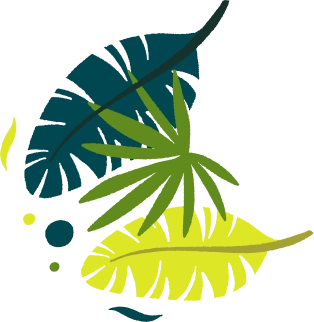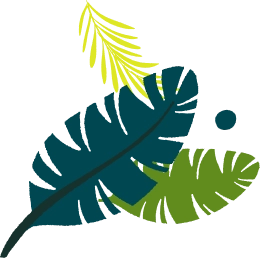


Arriving at Ha Giang’s famed Ma Pi Leng Pass felt like reaching a storybook. Far below, the Nho Que River winds a ribbon of emerald-green water between towering limestone cliffs. This hidden gem in northeastern Vietnam is unforgettable - a relaxing escape from the city located in the Dong Van Karst Plateau Global Geopark.
From high overlooks you see lush terraces and a turquoise gorge; boat trips reveal sheer rock walls and forested peaks.
The H’Mong, Tày and other ethnic villages along the banks add cultural charm, as locals still rely on the river for fishing and irrigation.
Reaching the Nho Que River is an adventure in itself. Most travelers head north from Hanoi. Buses (often overnight from My Dình station) and private cars cover ~300 km to Ha Giang City in 6-7 hours.
From Ha Giang, follow the famous Ha Giang Loop road through Dong Van town toward Mèo Vạc. The river can be accessed from two main docks: Ta Lang (Pai Lung commune) and Xin Cai (Xin Cai commune).
Ma Pi Leng Pass
Ta Lang Dock (Pai Lung): About 4-5 km north of Dong Van. Drive toward Mã Pí Lèng Pass, turn toward Pai Lung, park near the Trang Huong bridge and walk/hire a helper down to the river. The road is steep and winding, so many riders park and walk the final stretch.
Xin Cai Dock: Past the top of Mã Pí Lèng. From the pass take a left onto the dirt track into Xin Cai commune. Drive ~5 km on a rugged road, then hike ~2 km downhill to the river.
the Beautul River of Dong Van, Vietnam Which Is Part of Ha Giang Loop
For convenience, you can rent a motorbike in Dong Van and self-drive the loop, or hire a local car/driver (expect ~150,000 VND for the 30-minute drive to a dock).
Buses and shared cars run between the main towns, but they won’t drop you at the boat docks - you’ll still need local transport or a short hike to reach the water’s edge.
Boating is the highlight at Nho Que. Once you reach a dock, you can take a boat tour downriver into the famous Tu San Canyon (“Cat-Ears Gorge”).
Boats drift slowly on the calm water, hugging towering walls that rise hundreds of meters above. It’s pure jaw-dropping beauty - sunlight streaks the gorge and the only sounds are paddles and birds.
Tu San Canyon
Boats come in three types:
Motorboats (100-150k VND/person): These seat groups comfortably. They’re cost-effective (passengers share the ride) and easy if you just want to relax.
Self-Rowing Boats (100-150k VND/person): Available in metal or wooden models. Great for small groups who want to go at their own pace. If you can’t row, many boatmen will handle the oars for you (for a small extra fee).
Kayaks (from ~50k VND/person): The most active option. Paddling your own kayak is hugely popular with younger travelers and adventurers. Gliding in a bright orange kayak under the cliffs makes for epic photos (and a great workout). Life jackets are provided on all tours.
Besides boating, the surrounding mountains offer terrific hiking. Ma Pi Lèng Pass itself has a short stairway descent to the river for a breath-taking viewpoint. For longer treks, trails run along the canyon rim and through villages.
Ha Giang Loop of Vietnam
One popular trek is into the Pa Vi Bridge area or down to Lung Pu (the Mỹ Lâm Pass) for dramatic overlooks. Even a simple walk through nearby H’Mong villages or terraced fields is rewarding - you’ll discover quiet pagodas, flower meadows, and rustic homestays with friendly locals.
Early morning or late afternoon are the best times for photography: the golden light makes the river shine and often lights up mist aMong the mountains.
Boat Trip Cost: Plan on roughly 100,000-150,000 VND per person for a one-way boat ride. That price is for a motorboat or small shared rowing boat.
Kayak rentals start around 50,000 VND per person. If you hire the whole boat privately, you may negotiate a fixed rate (often a bit cheaper per head with a full group).
Guides & Tours: You can hire a boatman directly at the dock. If you prefer an arranged tour (often with hotel pickup and a guide), local agencies offer half-day or multi-day packages including Nho Que.
Guided Ha Giang loop tours (3-5 days) typically include the river. These cost ~$60-$120 depending on duration. For independent travel, most visitors simply negotiate at the docks or ask their homestay host to arrange a boat.
Entry Fees: There’s no official entrance fee for the river itself. Boat prices cover the ride. Some visitors pay a small parking/maintenance fee (~10-20k VND) at boat docks or trailheads, but it’s not formal.
Attractions like the H’Mong King’s Palace (near Sa Phin village) or caves (e.g., Lũng Lô Cave on the loop) have separate fees (usually 20-30k VND) if you choose to stop.
Safety Tips: The roads around Ha Giang are famous for hairpin turns and can be challenging after rain. Always wear a helmet on motorcycles, check your brakes, and don’t ride past dusk.
On boat rides, wear the provided life vest and listen to your rower. Avoid boating if it’s raining heavily or windy.
Pack a lightweight rain jacket (weather changes fast in the mountains). Bring plenty of water, sunscreen, a hat, and sturdy shoes for walking.
It’s remote here, so keep your phone charged (local SIM cards work well for maps).
Most cell coverage is spotty, so offline Google Maps and a physical map can be lifesavers.
Beyond the famous spots, Nho Que has secret corners. Downriver from the main docks, the Khâu Vai area offers a quieter panorama: few tourists venture to this side of the gorge, so you can enjoy a peaceful stretch of river amid wild nature.
Nho Que River, Ha Giang, Vietnam
Upstream, Phong Luu Canyon (often called “Nho Que 3”) is a lesser-known gorge with similar beauty. If you have time, ask locals about any unmarked footpaths or homestay-lookouts - the ethnic villages often have stunning private vantage points (and they’re happy to guide curious travelers).
For the classic shot, head to Ma Pi Leng Pass at sunrise or sunset: the light rays pouring through the valley can be magical. A wide-angle lens is handy here to capture the full scope of the gorge.
On the river, aim your camera back up toward the cliffs - paddling right below the cliffs gives a uniQue perspective you can’t get from the roadside.
And don’t forget night photography: clear nights over Nho Que can yield star trails if you set up a tripod on a deck or clearing. Just be respectful - keep flashlights low if villagers are near and take your trash with you.
Nho Que River is quite solo-traveler friendly. Many backpackers do the Ha Giang loop alone. To save money: take the overnight bus to Ha Giang City, stay in cheap hostels in Dong Van/Meo Vạc (~150k VND dorms), and eat where the locals eat (a hearty soup like thang co or banh cuốn for a couple of dollars can fill you up).
Boat rides are inexpensive, and you can split costs by joining other travelers on the same boat. Some guesthouses and hostels even organize group outings. Always keep your belongings secure (lock your bike or use hostel lockers) and let your homestay know your itinerary each day.
Thang Co Is a Delicacy in Vietnam
By embracing local ways - eating at small street stalls, sleeping in homestays, and bargaining kindly - you’ll make the trip affordable and authentic.
For example, try Mama’s Homestay, H’Mong inns in Lũng Cú, or the Panorama Homestay in Dong Van, where rooms are often 200-300k VND/night including a home-cooked breakfast. These stays connect you directly with hill tribe families, and they’ll usually help arrange boat tours or motorbike rentals at local rates.
Cuisine here is a highlight of northern Vietnamese travel. Sample thắng cố (a pungent H’Mong hotpot with herbs), bánh cuốn (steamed rice rolls), sticky rice, or grilled skewers at small stalls in Dong Van or Mèo Vạc.
Also look out for dishes featuring local river fish and mountain vegetables.
Locals often eat by communal table; you’ll usually be served small bowls of flavorful fish sauce, chili, and pickles to complement the meal.
When visiting villages, greet people with a smile. Many ethnic minorities in Ha Giang, like the H’Mong, Giấy, and Tày, wear colorful traditional dress; it’s polite to ask before photographing anyone. In homes and homestays, remove your shoes at the door.
Khau Vai Love Market, Vietnam
Accept offers of tea or snacks - if you do some simple Vietnamese phrases or hand gestures in return, locals will be very pleased.
Homestay hosts are extremely welcoming, so don’t hesitate to chat (even with gestures) about their family, work, or customs.
Nights often bring traditional music or dance when villagers gather; if invited to a small festival or family party (like the annual Khâu Vai Love Market in May), join in respectfully - it’s a memory you won’t forget.
Responsible Travel: Ha Giang’s beauty needs protecting. Carry reusable water bottles (there are filtration points in some guesthouses), don’t litter, and avoid single-use plastics. If you hike, stay on trails.
Support the local economy by buying handicrafts directly from makers or eating home-cooked meals rather than imported goods.
By traveling mindfully - using local guides, taking public transport where possible, and showing respect for nature and culture - you help keep Nho Que’s water pure and its communities thriving.
Amazing View of Nho Que River From a Rest Stop in Ha Giang
What makes Nho Que River special?
It’s famous for its emerald-green water and dramatic limestone gorge deep in Ha Giang province. The scenery (especially around Mã Pí Lèng Pass) is breathtaking, and it’s intertwined with local hill-tribe culture.
How do I get there from Hanoi?
Most people travel to Ha Giang by bus or car (about 6-7 hours north of Hanoi). From Ha Giang City you continue by motorbike or local bus to Dong Van or Mèo Vạc on the Ha Giang Loop. From Dong Van you follow signs to the Ta Lang or Xin Cai boat docks.
What activities are available?
The must-do is a boat ride or kayak on the river to explore Tu Sản Canyon. Hiking around the pass is popular for panoramic views.
You can also visit ethnic villages, markets (in Dong Van/Mèo Vạc), and nearby attractions like the H’Mong King’s Palace or Lũng Lô cave. Motorbike routes around the river offer more adventures.
What is the cost of a boat tour or kayak?
A typical boat trip is about 100,000-150,000 VND per person. Kayak rentals start around 50,000 VND each.
Bargain a bit if going with a group; full-day boat tours often include a guide and lunch. There’s usually no separate entrance ticket.
When is the best time to visit?
The dry season (September-April) is ideal. The river is calm and clear, the weather cool, and scenery lush or golden (especially Oct-Nov during the harvest).
Avoid heavy rains (summer) when roads get slippery and water rises.
Are there homestays or food nearby?
Yes. Dong Van and Mèo Vạc towns have many guesthouses and homestays (around 150k-300k VND/night).
Staying with a local family is highly recommended - they serve delicious home-cooked meals and can arrange tours. For food, try local specialties like thắng cố, sticky rice in bamboo, and grilled meats with mountain herbs.
Any safety or etiQuette tips?
Always wear a helmet on mountain roads, drive cautiously, and don’t ride in the rain. On the river, wear your life jacket and listen to the boatman.
Be polite to locals: remove shoes indoors, ask before photos, and try a few Vietnamese phrases. Small gifts (candy, stationery) for children are appreciated.
Get the latest information about our tours and special offers!